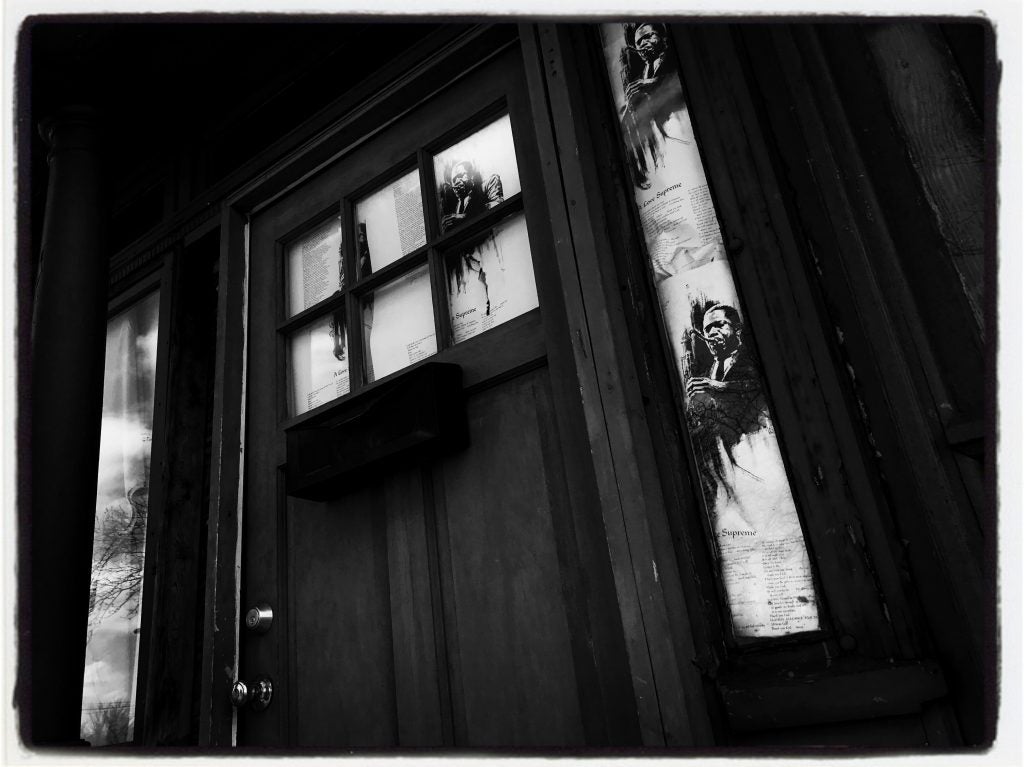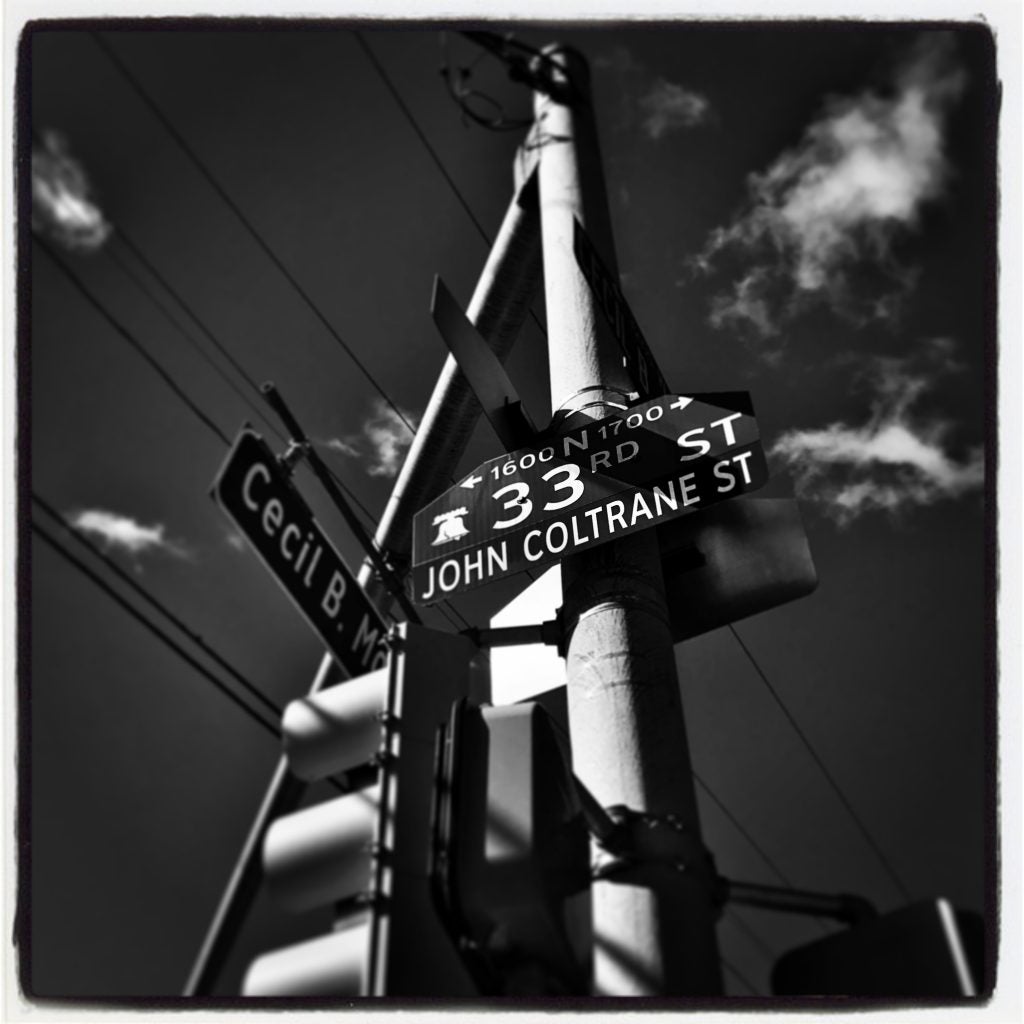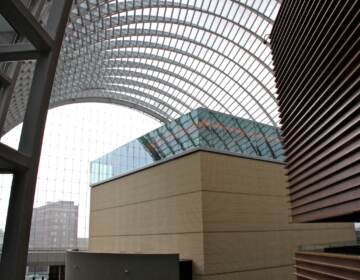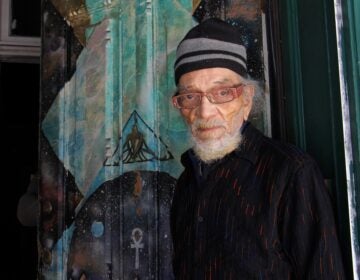A jazz legend’s Philadelphia home fading away
John Coltrane's vacant house on North 33rd Street is deteriorating but still bears marks of the composer's achievement.

A historical marker on 33rd Street identifies the home of jazz greats John and Alice Coltrane. (Peter Tobia/WHYY)
The sound of jazz coming from the car radio at twilight convinces me to turn onto Broad Street and head to North Philadelphia. As I approach Cecil B. Moore Avenue, the nuances in the musical compositions become clearer, making me smile in appreciation.
I drift for a moment, thinking of dimly lit clubs on back alley streets.
Small tables for two, drinks, warm affection, easy conversation.
Smiles exchanged and connections forged in the warm glow and then silence.
Until the musicians step onto the stage …
Then my daydream yields to the sounds of traffic.
I park the car, walk a block and find the address: 1511 N. 33rd St., the house where John Coltrane lived from 1952-1958. A blue historical marker opposite the house reads:
John W. Coltrane (1926-1967)
A pioneering African-American jazz musician, composer, saxophonist. Coltrane used African and Indian elements to create a distinctive style which at first shocked audiences but ultimately gained wide acceptance.
I glance back at the house that’s been vacant for years. It still stands tall with a sense of pride and accomplishment, perhaps echoing the music created within its walls.
But a sadness is evident in the brick structure that’s chipped and worn with paint peeling from the ornate wooden trim. Dirty windows, blankly staring, look like troubled eyes, crying for help. The house appears forgotten.

I walk up the front steps to notice liner notes to Coltrane’s masterpiece, “A Love Supreme,” taped to the small windows on either side of the front door.
“In the year of 1957, I experienced, by the grace of God, a spiritual awakening, which was to lead me to a richer, fuller, more productive life.”
The recording helped save him from a lifelong struggle with heroin and alcohol dependency.
Walking around, I notice a design in tile on the side of the house that’s faded and losing its brilliance — but I can still make out titles of recordings: “Blue Train,” “Giant Steps,” and “Coltrane.”
I turn and leave.
Walking back to the car, I think about “Alabama,” which Coltrane composed after the 1963 bombing of the 16th Street Baptist Church in Birmingham by the Ku Klux Klan. That dreadful act took the lives of four young African-American girls. Coltrane was inspired by the eulogy Martin Luther King Jr. gave three days after the bombing, and he patterned his playing on the saxophone to the cadence of King’s sermon.
Fortunately, Coltrane’s genius has been preserved in his recordings for perpetuity.
Unfortunately, I fear his house awaits a different fate.

Peter Tobia was a staff photojournalist for The Philadelphia Inquirer from 1993-2008. petertobiaphotographer.com
WHYY is your source for fact-based, in-depth journalism and information. As a nonprofit organization, we rely on financial support from readers like you. Please give today.




